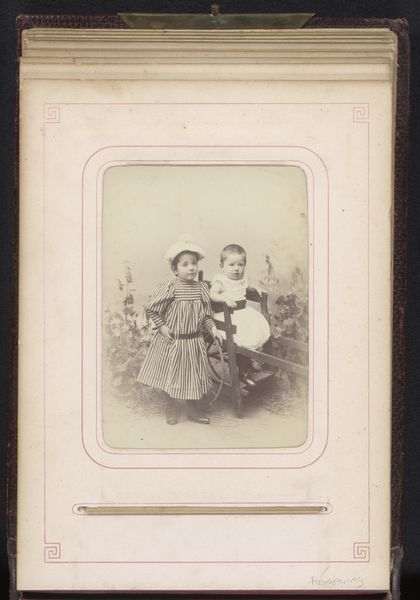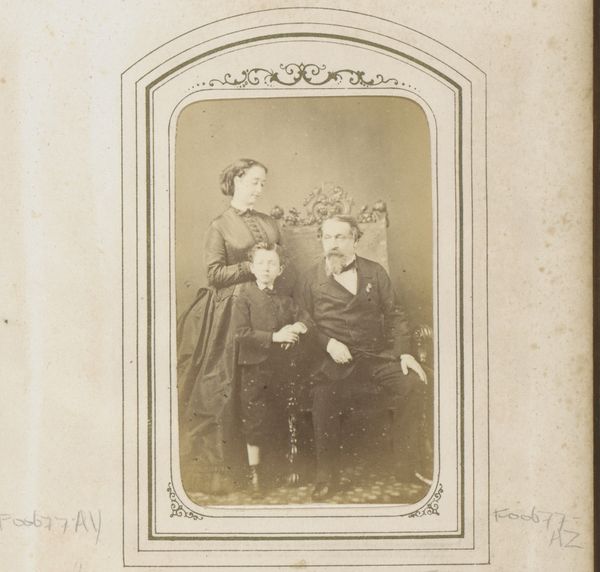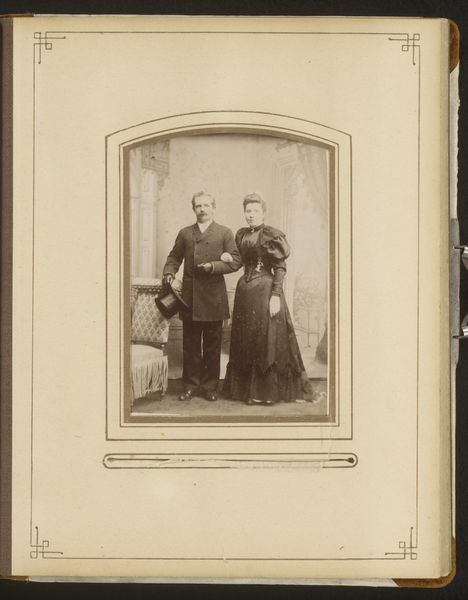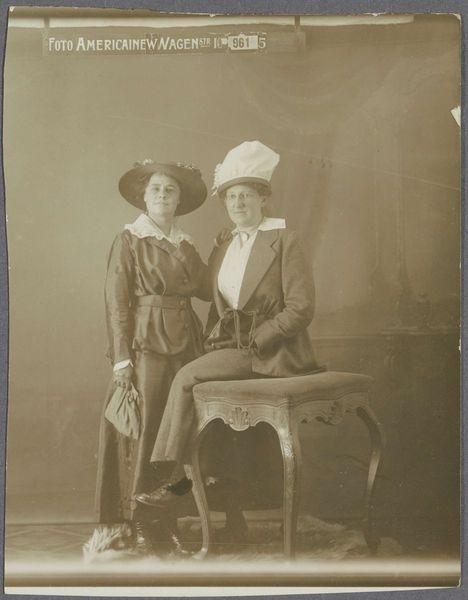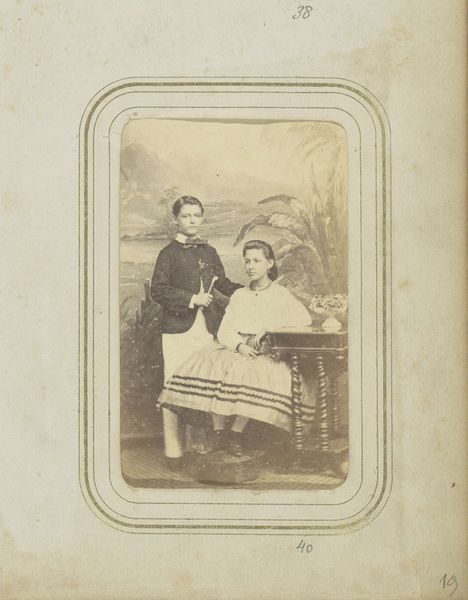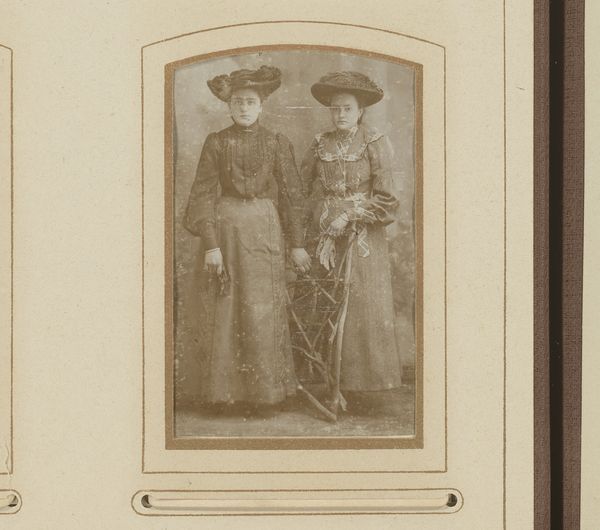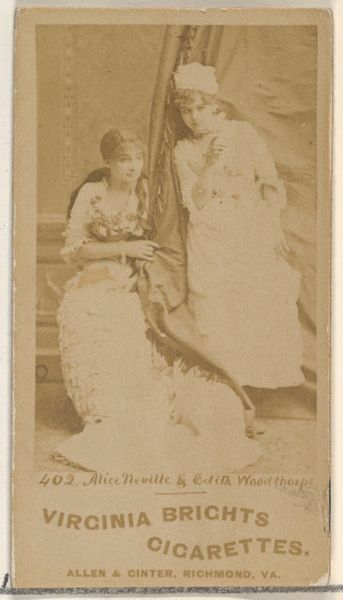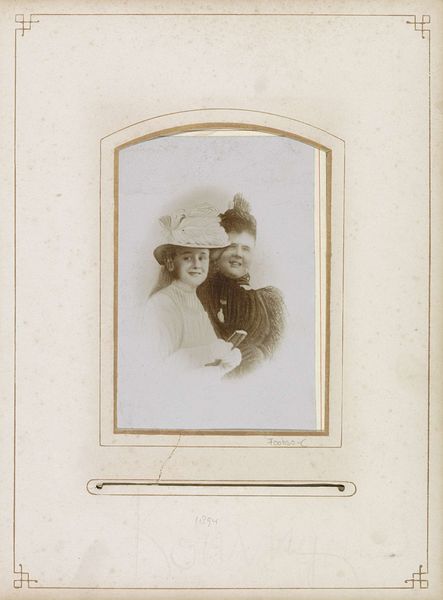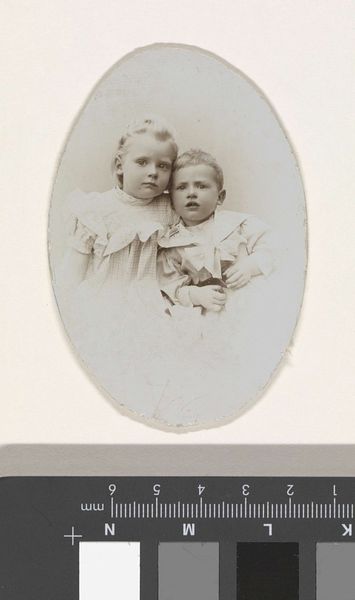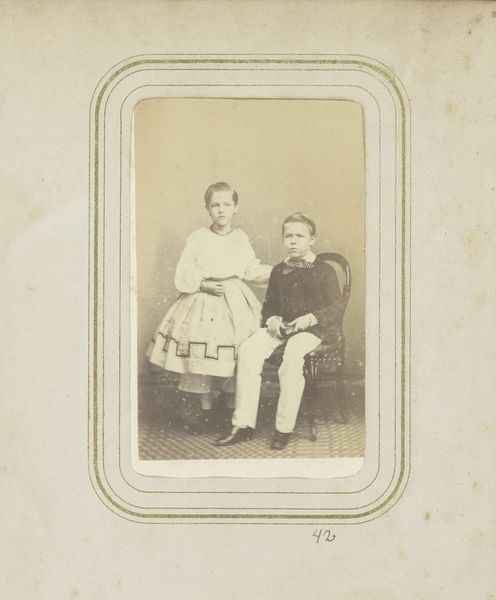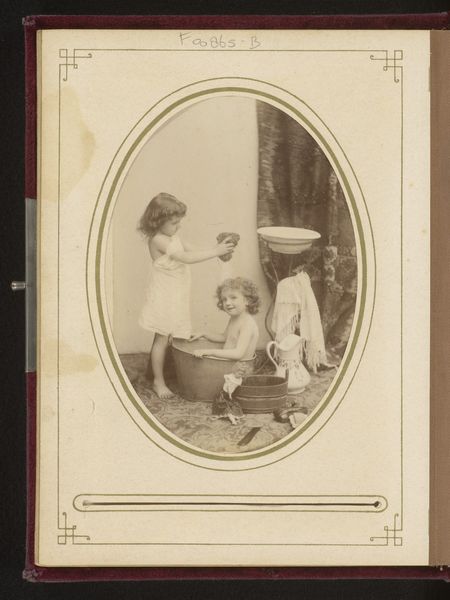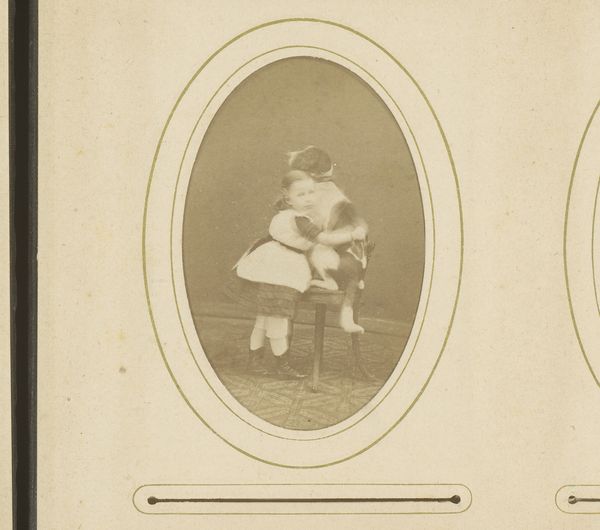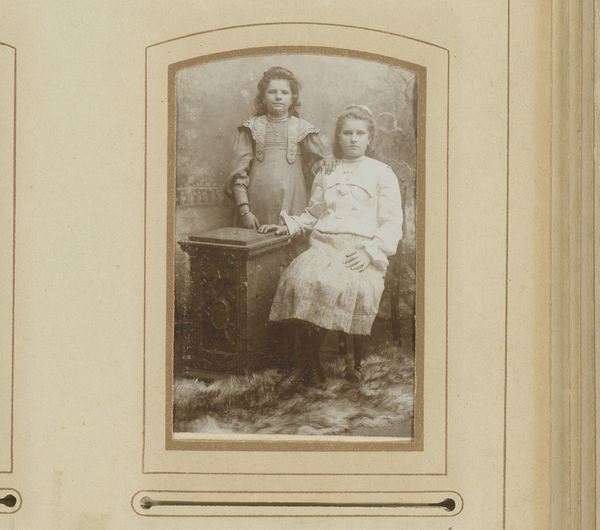
Dimensions: height 84 mm, width 51 mm
Copyright: Rijks Museum: Open Domain
Curator: Looking at this gelatin-silver print dating from somewhere around 1905 to 1910, I’m immediately drawn to the rigid formality, which contrasts starkly with the supposed innocence of childhood. The figures are "Portret van J.A. en Jaap Pennink (rechts) in matrozenpak," but it feels so staged, almost uncomfortable. Editor: It certainly captures a specific social performativity! The sailor suits speak volumes, don't they? They reference the growing naval power of European nations, the projection of maritime strength…these boys are literally costumed as agents of empire. It’s about social conditioning. Curator: Indeed, the sailor suit itself carries heavy symbolic weight. From a psychological perspective, these outfits, these shared aesthetics, served as visual codes of allegiance and aspiration for young boys, imprinting them early on with particular ideas about identity, nationhood, and even masculinity. Editor: And think of the broader implications –the families commissioning these portraits were likely middle to upper class, eager to display their own societal standing. This photograph functions as both a private memento and a public assertion of social capital. Curator: Exactly, which explains the almost aggressive symmetry in the boys’ positioning, and the slightly mournful look in their eyes. While the suits might imply adventure, this photo, to me, feels more like the imposition of a script onto their lives. Is there something in the stance that speaks of resistance to you? The boy on the right has his arms folded as if closed off from the other one. Editor: Possibly! The folded arms might be a minor rebellion within a carefully controlled image. Also the slight variations in the back ground are intriguing because the backdrop behind them seems unfinished; a staged photograph, but with an intentional flaw. The slightly unfocused lens makes me wonder if the photographer was attempting to achieve a snapshot style, defying formal rigidity. Curator: It is compelling to see those nuances of resistance and subversion beneath the obvious symbolic layers. I had initially focused on what I interpreted as loss of innocence due to forced identity conformity. Editor: Precisely. By examining how socio-political forces intersect with personal expression, we start to glimpse the complexities within these carefully constructed representations. Curator: Absolutely. It reveals a deeper understanding of not just photographic history, but the persistent human impulse to both conform and subtly resist the dominant narratives around us. Editor: Well said. These carefully posed figures open doors to unexpected narratives from an era gone by.
Comments
No comments
Be the first to comment and join the conversation on the ultimate creative platform.
